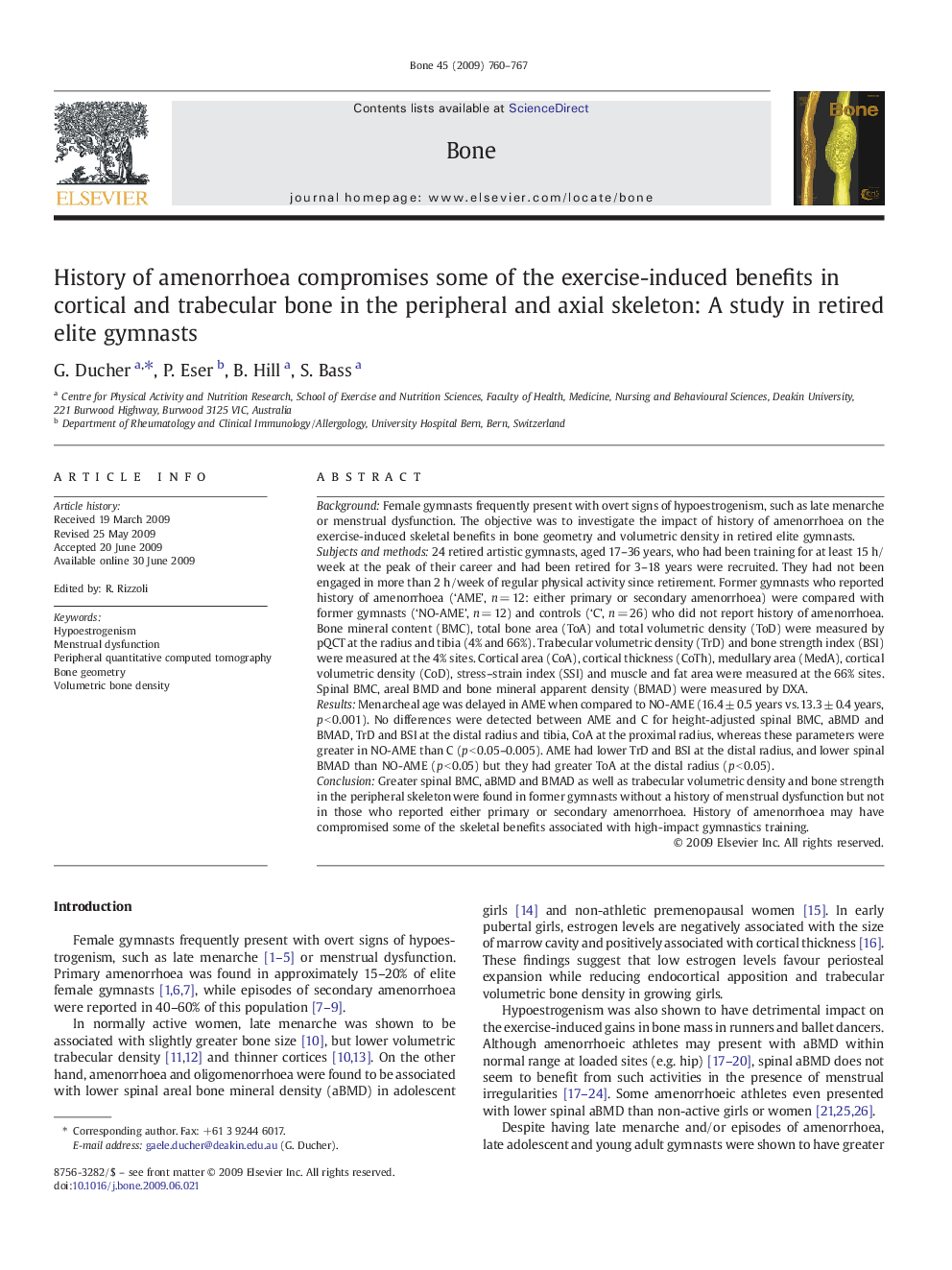| Article ID | Journal | Published Year | Pages | File Type |
|---|---|---|---|---|
| 2780806 | Bone | 2009 | 8 Pages |
BackgroundFemale gymnasts frequently present with overt signs of hypoestrogenism, such as late menarche or menstrual dysfunction. The objective was to investigate the impact of history of amenorrhoea on the exercise-induced skeletal benefits in bone geometry and volumetric density in retired elite gymnasts.Subjects and methods24 retired artistic gymnasts, aged 17–36 years, who had been training for at least 15 h/week at the peak of their career and had been retired for 3–18 years were recruited. They had not been engaged in more than 2 h/week of regular physical activity since retirement. Former gymnasts who reported history of amenorrhoea (‘AME’, n = 12: either primary or secondary amenorrhoea) were compared with former gymnasts (‘NO-AME’, n = 12) and controls (‘C’, n = 26) who did not report history of amenorrhoea. Bone mineral content (BMC), total bone area (ToA) and total volumetric density (ToD) were measured by pQCT at the radius and tibia (4% and 66%). Trabecular volumetric density (TrD) and bone strength index (BSI) were measured at the 4% sites. Cortical area (CoA), cortical thickness (CoTh), medullary area (MedA), cortical volumetric density (CoD), stress–strain index (SSI) and muscle and fat area were measured at the 66% sites. Spinal BMC, areal BMD and bone mineral apparent density (BMAD) were measured by DXA.ResultsMenarcheal age was delayed in AME when compared to NO-AME (16.4 ± 0.5 years vs. 13.3 ± 0.4 years, p < 0.001). No differences were detected between AME and C for height-adjusted spinal BMC, aBMD and BMAD, TrD and BSI at the distal radius and tibia, CoA at the proximal radius, whereas these parameters were greater in NO-AME than C (p < 0.05–0.005). AME had lower TrD and BSI at the distal radius, and lower spinal BMAD than NO-AME (p < 0.05) but they had greater ToA at the distal radius (p < 0.05).ConclusionGreater spinal BMC, aBMD and BMAD as well as trabecular volumetric density and bone strength in the peripheral skeleton were found in former gymnasts without a history of menstrual dysfunction but not in those who reported either primary or secondary amenorrhoea. History of amenorrhoea may have compromised some of the skeletal benefits associated with high-impact gymnastics training.
